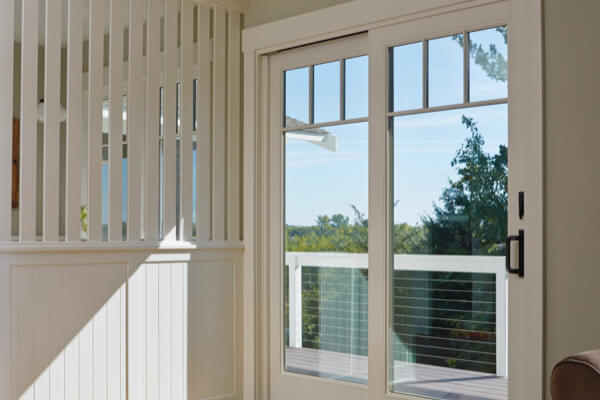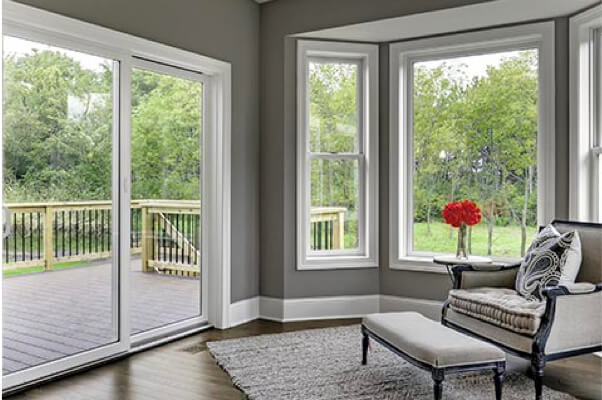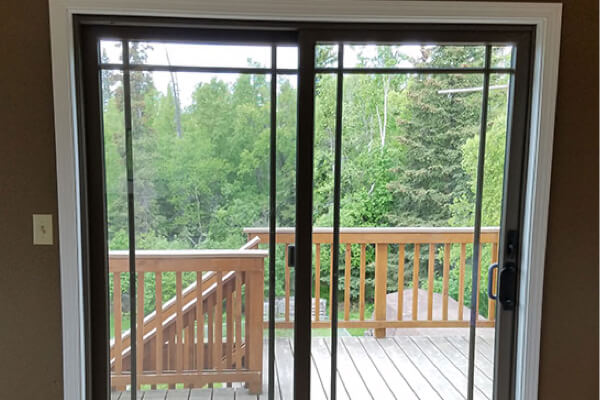Windows have a tendency to sweat in the fall. Yes, even your new ones! This is just one of those things that happens when we get cooler weather. Condensation on windows, outside or inside, occurs when moisture from warm indoor air meets cold glass on the windows. It’s especially likely to occur in the fall and winter when overnight temperatures drop.

Think about how a glass of cold water feels on a hot summer day. It’s cool to the touch, but the air around it is warm and humid. When the two meet, your beverage sweats. That’s what’s happening to your windows! So, the water you’re seeing is not a reason to worry.
It may seem counter-intuitive, but it’s actually not bad that condensation shows up on the outside or inside of your window. Condensation will appear from time to time on even the best-performing windows—in fact, it may be more noticeable on high quality windows since they are so energy-efficient. Condensation can actually be a sign that your windows have good, tight seals. The very things that make homes more energy efficient—windows and patio doors that reduce air leakage, weather-stripping, high-quality insulation, vapor barriers—also lock moisture inside your house.
Moisture is a part of everyday life. Every time someone in your household takes a shower or cooks, it contributes to increased indoor humidity. Condensation is just a by-product of this humidity.
In Alaska, where the fall and winters are very cold, it’s important to keep indoor humidity only as high as you need it. When you see condensation on the inside of your window, it’s a sign to try and lower the humidity. Here are a few tips for accomplishing this goal:
- Open the blinds and drapes to let moisture-laden air escape.
- Raise the air temperature in your home (turning the heat on will decrease relative humidity).
- Turn on ceiling fans to improve air circulation.
- Run exhaust fans in the kitchen while cooking and in the bathroom while showering or bathing. Leave the fan running for 15 minutes after you’ve finished to clear out lingering moisture.
- Ensure proper ventilation of appliances such as dryers to the outside, as well as attic and crawlspaces.
For more information on relative humidity and condensation in your home, check out this video:
Thinking of replacing some of your older windows with new energy efficient ones? Give us a call or fill out our contact form to schedule a consultation. We’re proud to serve Anchorage, the Mat-Su Valley, Fairbanks, the Kenai Peninsula, and Juno.










